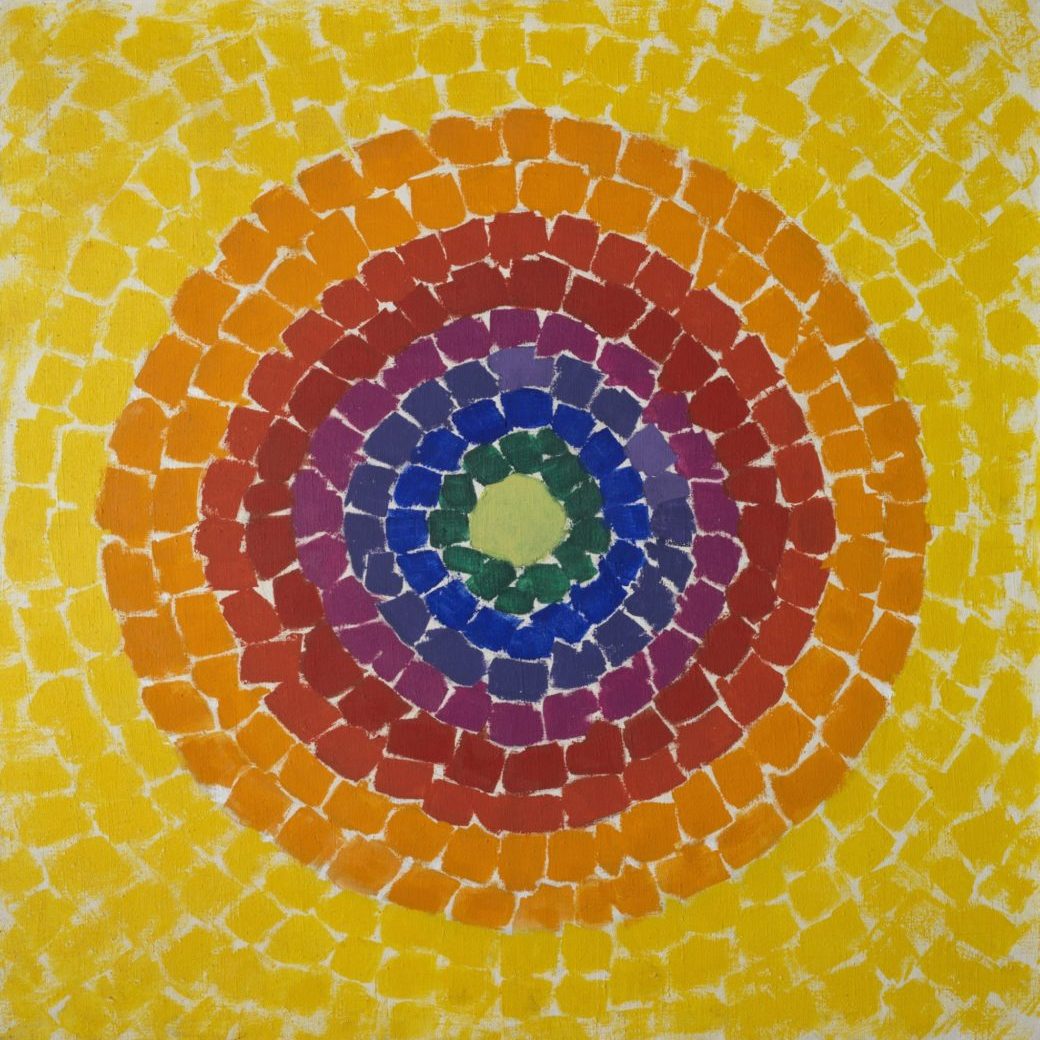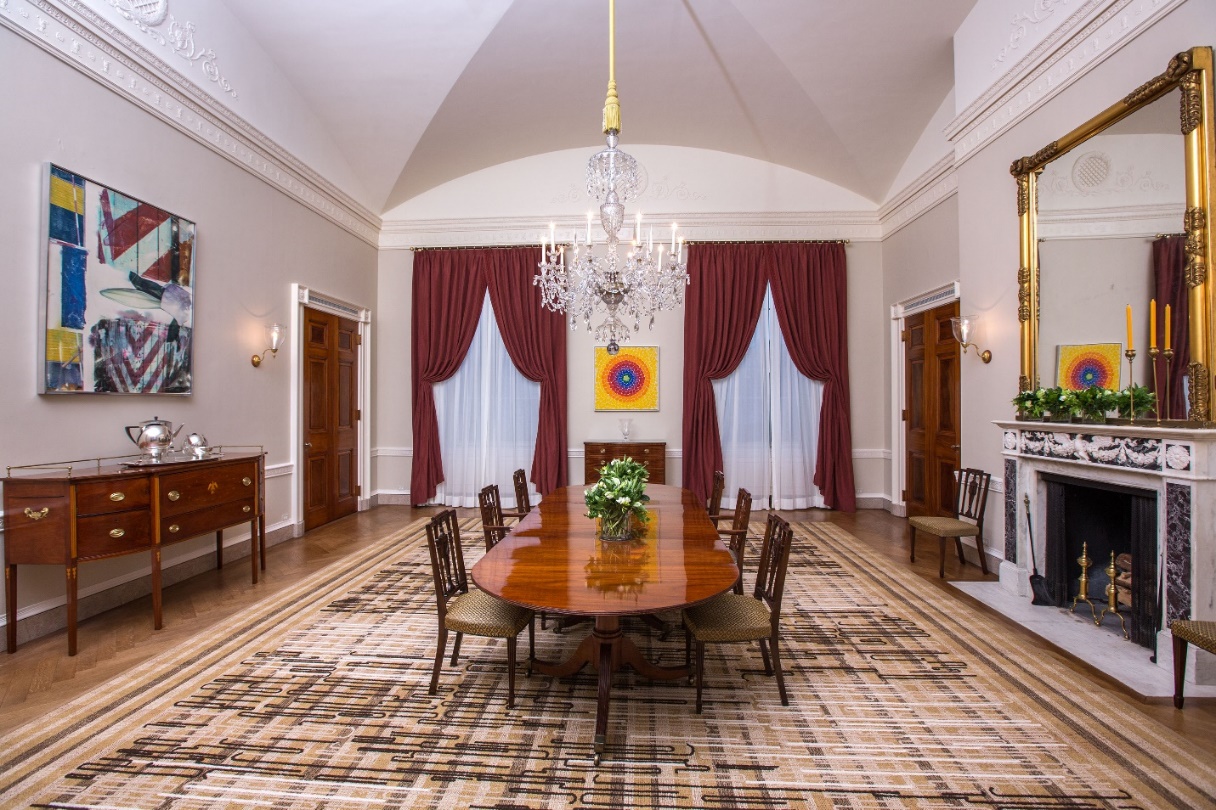Thomas, Alma W. - VM - Victoria Emily Jones
Alma W. Thomas: Resurrection

Spring’s Extravaganza
by Victoria Emily Jones
Alma Thomas (1891–1978) was an African American artist best known for her exuberant abstract paintings inspired by the hues, patterns, and movement of trees and flowers in and around her neighborhood in Northwest Washington, DC. Seeking relief from the racial violence in her native Georgia and better educational opportunities, she moved to Washington with her family at age fifteen and remained there for the rest of her life. In 1924 she became Howard University’s first fine arts graduate, and after that taught art for thirty-five years at Shaw Junior High School, leaving behind a celebrated legacy as an educator and a champion for black youth. She was also an active member of St. Luke’s Episcopal Church, through which she founded the Sunday Afternoon Beauty Club, organizing field trips, lectures, and other activities to promote arts appreciation.
Though Thomas had been painting for decades, she didn’t develop her signature style—consisting of vibrant paint pats arranged in columns or concentric circles—until about 1965, after retiring from teaching. She called these irregular free blocks “Alma’s Stripes.” Her exploration of the power of simplified color and form in luminous, contemplative, nonobjective paintings means she is often classified as a Color Field painter, and she is particularly associated with the Washington Color School. At age eighty she had her first major exhibition, at the Whitney Museum of American Art in New York in 1972. She was the first black woman to receive a solo show at this prestigious museum, and the show won her instant acclaim.
The natural world was an enduring source of inspiration for Thomas. She kept a flower garden in her backyard and frequented the green spaces of the nation’s capital. Many of her paintings, whether of outwardly radiating rings or parallel rows, are meant to suggest an aerial view of flower beds or nurseries.
One such painting she titled Resurrection. Bright and explosive, it is made up of rhythmic daubs of prismatic color—green, blue, indigo, violet, red, orange, yellow. Similar compositions include A Joyful Scene of Spring and Wind Dancing with Spring Flowers.
The title likely refers first and foremost to nature’s coming back to life in springtime. But it also invites associations with the resurrection of Christ. One might see in the painting the ripple effect of that historic event, which moves ever outward and cannot be contained within the frame. The stone has been rolled away and the mouth of the empty tomb stands agape, promise (a veritable rainbow) bursting forth.
In 2014, under Barack Obama’s US presidency, Resurrection was acquired for the White House Collection. It debuted the following year, during Black History Month, in the Old Family Dining Room (see photo below) and is currently located in the Vermeil Room.

Thomas frequently spoke about the beauty of local, seasonal flora, and sometimes couched her enthusiasm for such in religious terms. “Spring delivers her dynamic sermons to the world each year, drenching one’s soul with its extravaganza,” she’s quoted as saying in a 1970 D.C. Gazette article. Beauty preaches.
For an overview of Thomas’s oeuvre, see “Beauty and joy in the paintings of Alma Thomas,” my review of the retrospective Alma W. Thomas: Everything Is Beautiful, which is currently at the Columbus Museum in Georgia.
*******
Alma W. Thomas: Resurrection, 1966, Acrylic and graphite on canvas, 91.4 × 91.9 cm. White House Collection, Washington, DC, © 2022 White House Historical Association. https://www.whitehousehistory.org/photos/resurrection-by-alma-thomas
Alma W. Thomas (1891–1978) was an American modernist whose “vibrant color field paintings celebrate the beauty and exuberance of the natural world. The Washington Color School artist transformed trees, lakes, and sunsets into kaleidoscopic explosions of color. . . . Thomas was the first graduate of Howard University’s art department in 1924, but her career didn’t fully blossom until 1960, when she retired from a nearly 40-year career as a public school teacher in Washington, D.C. She went on to win acclaim for her bright abstractions, and in 1972, she was the first black woman to receive a solo show at the Whitney Museum of American Art. Her work belongs in prominent collections around the United States, including the Metropolitan Museum of Art and the Art Institute of Chicago.” [source]
Victoria Emily Jones lives in the Baltimore area of the United States, where she works as an editorial freelancer and blogs at ArtandTheology.org, exploring ways in which the arts can stimulate renewed engagement with the Bible. She serves on the board of the faith-based arts nonprofit the Eliot Society and as art curator for the Daily Prayer Project, and she has contributed to the Visual Commentary on Scripture and the Encyclopedia of the Bible and Its Reception. Follow her on Instagram @art_and_theology.
ArtWay Visual Meditation July 10, 2022


